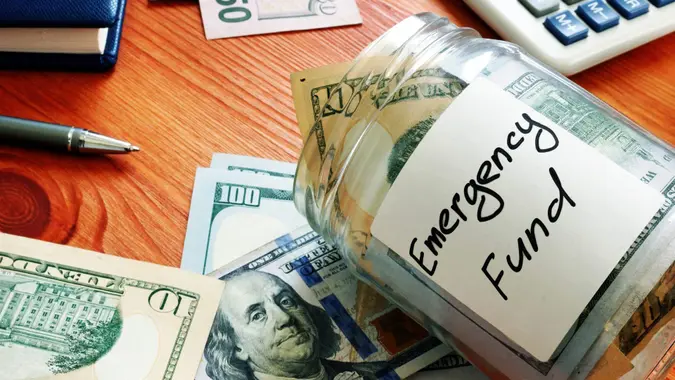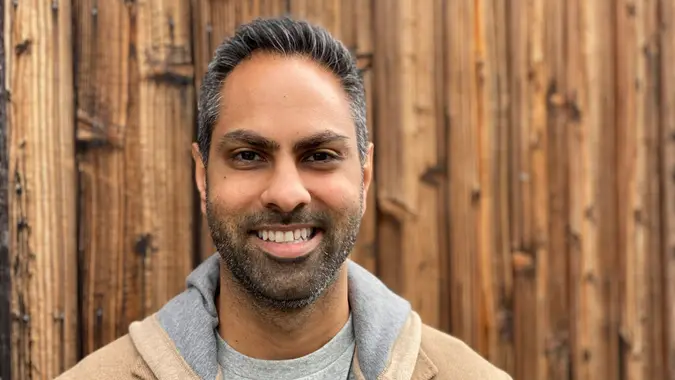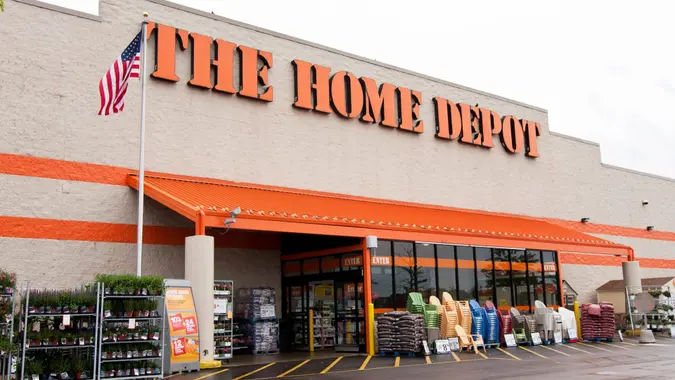The Best $50 Parents Spent on Their Kids’ Financial Future

Commitment to Our Readers
GOBankingRates' editorial team is committed to bringing you unbiased reviews and information. We use data-driven methodologies to evaluate financial products and services - our reviews and ratings are not influenced by advertisers. You can read more about our editorial guidelines and our products and services review methodology.

20 Years
Helping You Live Richer

Reviewed
by Experts

Trusted by
Millions of Readers
Raising kids comes with countless expenses, but some stand out as true game-changers — especially when they help build a strong financial foundation.
Whether it’s a clever tool, an early investment, or a lesson that sticks for life, the right spend at the right time can pay off in ways that go far beyond dollars and cents.
Below, parents share the single best purchase they’ve made for their kids’ financial future, and their answers are both practical and inspiring.
From teaching money basics to planting seeds for long-term growth, these stories prove that sometimes the smartest investments are the ones that set our kids up for independence and confidence later on.
Investing In 529 Education Savings Accounts
“The smartest financial move my wife and I made for our children’s future started with a $5,000 investment in 529 education savings accounts the day each child was born,” said Dr. Mark R. McNees, director of social and sustainable enterprises at Florida State University.
But the real game-changer, he explained, was transforming every birthday and holiday into a wealth-building opportunity. From ages 0-4, he and his wife asked grandparents, aunts, uncles, and friends to skip the toys and instead contribute what they would have spent directly to their children’s 529 accounts.
McNees said this strategy works because it leverages something every parent has access to: a network of people who already want to give to their children.
“Instead of accumulating toys that get forgotten after a few weeks, we accumulated compound interest,” he said.
“A $50 toy becomes $50 that could grow tax-free for 18 years. When you multiply that by birthdays, holidays, and multiple relatives over several years, you’re looking at thousands of dollars in contributions that cost you nothing extra.”
Invest Early and Often
Courtney Pettway, co-founder and CEO of KidVestors, similarly took the same approach by investing early and often.
“The earlier you start, the more time you give compound interest to work its magic, I often tell other parents. Even setting aside $50 a month can snowball into six figures by the time your child graduates,” said Pettway.
She and her husband opened investment accounts for their kids the moment they could, using tools like 529 plans, custodial brokerage accounts, and custodial Roth IRAs.
The Key Is Starting This Conversation Early and Being Specific With Gift-Givers
McNees said that when it comes to redirecting gift money toward a college fund, communication is everything. Starting the conversation early and being clear about your goals helps family and friends understand how to give in a way that truly supports your child’s future.
“We’d say: ‘Emma has everything she needs toy-wise, but if you’d like to give her something truly meaningful, a contribution to her college fund would be incredible.”
McNees explained that even $25 makes a difference, and noted that most people were actually relieved to have a clear direction, and many appreciated not having to shop for toys.
“My children are now 24 and 28, and both graduated completely debt-free. We even had enough remaining to fully fund my daughter’s master’s degree.”
He said that the initial $5,000, plus four years of redirected gift money, grew into full college educations.
According to McNees, any parent can replicate this strategy.
“You don’t need the full $5,000 to start. Open a 529 with whatever you can afford, then focus on the gift redirection strategy,” he said.
The compound effect of time and tax-free growth does the heavy lifting. The earlier you start, the less you need to contribute to achieve the same result.
More From GOBankingRates
 Written by
Written by  Edited by
Edited by 

























